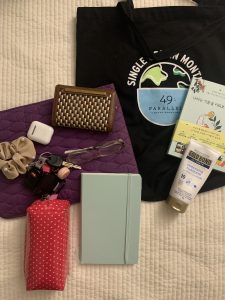![]()
It was more challenging than I expected trying to translate the movie title and plot into emojis. I originally wanted to focus on the title itself because the words in the title are commonly used and its meaning is fairly straightforward. However, there was no corresponding emoji available on the Emoji keyboard. I resorted to the ideas and characters of the movie, hoping that the chosen emojis also brought up the same ideas/themes for the readers.
This activity first reminded me of Gretchen McCulloch’s interview on the podcast The Allusionist from last week, where she talked about gestures and visuals such as Emojis being culturally bound and what people make of the emojis depending on their experience, cultural context and linguistic context. I pored over the emojis available hoping to find the most obvious one but knowing that it is not universal. Even the search bar was of little help in searching for the emoji as their descriptions don’t match the visual image (in my interpretation). I could not find the emojis for the specific emotions I was looking for – which is quite ironic (it will make sense once you know which movie I am referring to). I thought this movie would be easy to translate because it is what “emojis” are supposed to communicate (*hint*).
By lining up these emojis, I wondered if I was creating what Kress refers to as a strict order established by the writer, requiring the reader to follow and interpret signifiers. I am assuming that the reader will be reading from left to right (starting with the movie emoji). Does the sequence in that I laid out these emojis affect the readers and their chance of figuring out what movie I am referring to? Are the emojis an effective choice in telling a story or am I displaying a selection of elements associated with the movie, with no narration of the plot? I was also mindful of picking the correct visual representation of the main character’s ethnicity and trying to find the emoji that looks most like them.
On a personal note, this activity got me reflecting on how I post on social media. On image-sharing platforms, such as Instagram, I will often post an image followed by emojis as a description rather than words. I often thought this was the most concise and easiest way of communicating because instead of writing sentences on where I went and what activities I participated in – I could just use 4 or 5 emojis in their place. But from a reader’s perspective, it may not necessarily mean the same thing and since communication is constantly evolving, I realize that there is a chance of miscommunication with someone from another culture or generation, or with a different experience.
Reference
Kress, G. (2005), Gains and losses: New forms of texts, knowledge, and learning. Computers and Composition, 2(1), 5-22.
Zaltzman, H. (Host). (2019, July 13). New rules (No. 102). [Audio podcast episode]. In The allusionist.
